SEO
A Guide To Social Advertising Success

Getting started with a paid social media strategy can be daunting and time-consuming.
As a social media advertising agency leader (say that three times fast), we often get clients asking if we can fix their existing campaigns to improve return on investment.
The problem?
They haven’t taken a step back to focus on an overall strategy.
They jumped into social advertising with an audience they thought was right, a platform they thought was right, and creative that they thought fit both this maybe-audience and maybe-platform.
Gathering data before creating ads is just as important as setting up and perfecting the ads themselves.
There are two primary data sets I recommend gathering to create an overall strategy:
- Understand the landscape of social media advertising.
- Understand your audience and how they relate to each social platform.
Once you understand the social media landscape and identify your ideal audience, you can create a social ads strategy with realistic goals that complement your SEO and other digital marketing efforts.
First: Understand The Landscape Of Social Advertising
Your target audience will not necessarily fall perfectly in line with the number of total social users. Still, some social networks have so many more active users that it may help sway you to include them in your strategy.
For example, if you know your target audience is on TikTok, start there.
Then, when it’s time to expand and test, you may want to consider Facebook because of the sheer number of users (and maybe you’ll learn something about a “new” target audience, after all).
Below is an insightful chart from Search Engine Journal that lists the top 10 social advertising platforms and their monthly active users worldwide:
And here is another helpful chart from Accion Opportunity Fund that breaks down a few of the basics of the top social networks we’re seeing today.
Next: How To Get Started Crafting A Social Advertising Campaign
As discussed above, when getting ready to start social advertising, you don’t necessarily just want to choose Facebook, for example, because it has the most users.
On that same note, you don’t just want to assume your audience isn’t on Facebook because you think your target audience is younger.
The good news for advertisers is that each platform provides detailed audience insights that you can use to match your ideal audience without spending much money blindly testing. (More on this later.)
There are three major points, each with subsections, that matter when it comes to a paid strategy.
Audience Personas: Establishing Your Audience Demographics, Interests, And Behaviors
Audience personas give you an understanding of your ideal audience, including demographics, interests, and behaviors.
This step is always the first step for us, and there are a few different ways we gather this data:
Dig Into The Analytics
Google Analytics, to be exact.
The Audience section within Google Analytics is a great starting point since it has valuable insights that can guide your social advertising strategy.
It will show you who is currently interacting with your website, but more importantly, who is contributing to the conversions/transactions.
This data includes age, gender, location, and more.
For example, if you see that the age group of 18–24 is converting at a higher rate than 45–54, you may want to optimize your campaign for the younger age group.
Go To Where You Think Your Audience Is, And Interact
Believe it or not, some of our clients come to us with an idea for a social advertising campaign, but they aren’t actively engaging with their audience on that social network!
For example, with the rise of TikTok, it can take a while to build a presence.
So we always recommend building up your social media account first and getting out there to see what people are talking about – you may be surprised at what you learn.
Research Your Competitors
Observe where your competitors are active on social media and how they market their products or services.
This is an easy way to ensure you aren’t missing any opportunities and is usually a good starting point when beginning to craft a social advertising strategy.
You can learn more about how to research your competitors here.
Audience Segments: Understanding Where In The Customer Journey They Are (Awareness, Consideration, Conversion, Etc.)
Next, it’s essential to realize that while you may have one audience in terms of demographics, that audience can (and should) be further segmented down into where they are in the journey.
We usually segment an audience three times:
- Those who have never heard of your brand.
- Those who have engaged with your brand in the past, but only with blog posts or educational resources (which means they’re still learning).
- Those who are ready to buy, which is often shown by having items in a cart or having spoken to someone at your organization on the phone and expressed interest in buying.
While these three segments are general, you can think about your business specifically to come up with more defined segments that you may want to target, often called “audience personas.”
This is a big topic, so you can learn more about creating audience personas here.
Audience segmentation usually coincides with prospecting, retargeting, and remarketing campaigns (more resources on different campaign types later).
Audience Personalization: Developing Content And Messaging Specific To The Audience At The Proper Time In Their Journey
In short, there should be different content and messaging for someone who hasn’t heard of the company versus someone who has previously engaged with it.
Once you’ve defined your segments, it’s time to start personalizing content, and the type of content you write depends on the platform.
The next steps include:
- Match your audience with two or three platforms, and then expect to produce different ad creative based on your audience personas. By this point in your journey, you should have already analyzed the landscape of the social media options and researched where your audience is!
- Advertise on each of these platforms to see what works. You may only want to focus on one social platform, but we recommend at least two, as they can complement each other well. Also, since each platform has unique ad formats, we suggest creating ads specific to each channel while keeping the same look and feel for consistency.
- Refine your ads. Once again, this is a big topic. Tweaking your audience segmentations, your content, the time of day you post that content, etc., is an optimization skill all of its own. Keep in mind that you don’t want to make too many big changes without collecting enough data.
- Expand your strategy. Don’t be afraid to try other networks as you grow and refine your ads. You’ll start to see what’s working and what isn’t – and while this won’t be identical on every social network, you will start to get a baseline for where to begin your tests. This will help you save money and time in the long run as you expand.
Lastly: Setting Up Ad Campaigns
While this article focuses on the strategy for social advertising, being able to set up your ads successfully isn’t always as cut-and-dry as it should be because there are so many different campaign types.
Pro Tip: When setting up the campaigns, I recommend starting with three campaigns (prospecting, remarketing, and retargeting) to ensure you engage with your audience at the right time along their journey.
Below is an example to help get you started:
Prospecting (Awareness)
- Audience segment: Those who have never heard of your brand.
- Campaign objective: Reach, awareness.
- Messaging: Focus on the user. What problem are you trying to solve?
- Content types: Educational articles, industry news, research stories.
Retargeting (Consideration)
- Audience segment: Those who have engaged with your brand in the past, but only with your website, social media, or educational resource.
- Campaign objective: Engagement, clicks.
- Messaging: Focus on the benefits of using a product or service to solve the problem.
- Content types: Ebooks, whitepapers, company events.
Remarketing (Decision)
- Audience segment: Those who are ready to buy, which is often shown by having items in a cart or having spoken to someone at your organization.
- Campaign objective: Conversions, purchases.
- Messaging: Focus on why they should choose your solution to solve their problem versus your competitors.
- Content types: Testimonials, reviews, case studies.
For step-by-step instructions for each individual social network, see the resources below:
Final Thoughts
Ultimately, creating an effective paid social media strategy will take time, and you will consistently be reiterating, revising, and optimizing.
As with anything, a successful business is about testing, but researching before jumping into paid media – and then using paid media as another part of your testing – is crucial for a successful overall strategy that complements your SEO and other digital marketing efforts.
Always define your goals, consider the engagement you want and expect, and then use the steps above to make it happen!
More resources:
Featured Image: Dean Drobot/Shutterstock
SEO
Google March 2024 Core Update Officially Completed A Week Ago
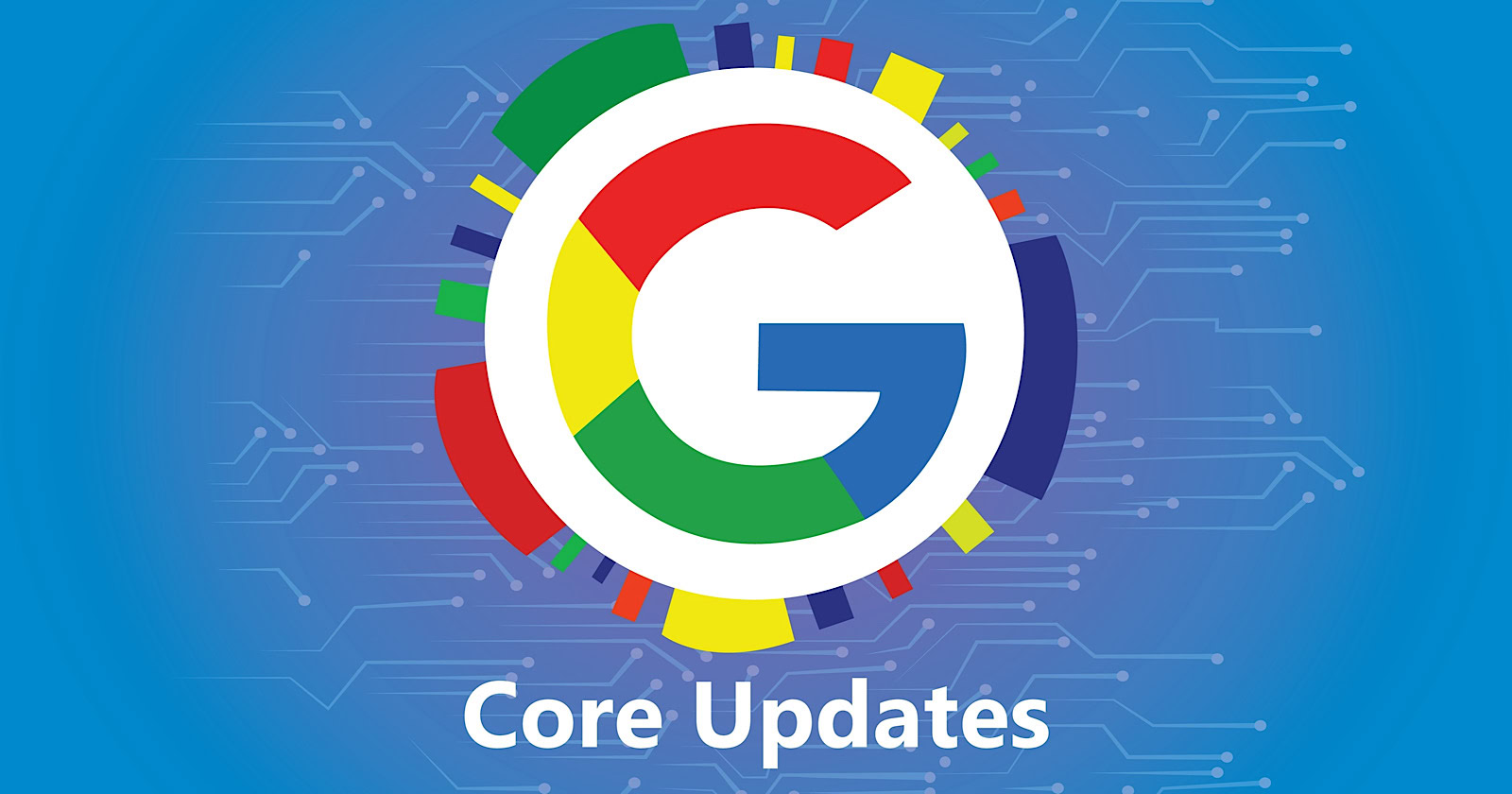
Google has officially completed its March 2024 Core Update, ending over a month of ranking volatility across the web.
However, Google didn’t confirm the rollout’s conclusion on its data anomaly page until April 26—a whole week after the update was completed on April 19.
Many in the SEO community had been speculating for days about whether the turbulent update had wrapped up.
The delayed transparency exemplifies Google’s communication issues with publishers and the need for clarity during core updates
Google March 2024 Core Update Timeline & Status
First announced on March 5, the core algorithm update is complete as of April 19. It took 45 days to complete.
Unlike more routine core refreshes, Google warned this one was more complex.
Google’s documentation reads:
“As this is a complex update, the rollout may take up to a month. It’s likely there will be more fluctuations in rankings than with a regular core update, as different systems get fully updated and reinforce each other.”
The aftershocks were tangible, with some websites reporting losses of over 60% of their organic search traffic, according to data from industry observers.
The ripple effects also led to the deindexing of hundreds of sites that were allegedly violating Google’s guidelines.
Addressing Manipulation Attempts
In its official guidance, Google highlighted the criteria it looks for when targeting link spam and manipulation attempts:
- Creating “low-value content” purely to garner manipulative links and inflate rankings.
- Links intended to boost sites’ rankings artificially, including manipulative outgoing links.
- The “repurposing” of expired domains with radically different content to game search visibility.
The updated guidelines warn:
“Any links that are intended to manipulate rankings in Google Search results may be considered link spam. This includes any behavior that manipulates links to your site or outgoing links from your site.”
John Mueller, a Search Advocate at Google, responded to the turbulence by advising publishers not to make rash changes while the core update was ongoing.
However, he suggested sites could proactively fix issues like unnatural paid links.
“If you have noticed things that are worth improving on your site, I’d go ahead and get things done. The idea is not to make changes just for search engines, right? Your users will be happy if you can make things better even if search engines haven’t updated their view of your site yet.”
Emphasizing Quality Over Links
The core update made notable changes to how Google ranks websites.
Most significantly, Google reduced the importance of links in determining a website’s ranking.
In contrast to the description of links as “an important factor in determining relevancy,” Google’s updated spam policies stripped away the “important” designation, simply calling links “a factor.”
This change aligns with Google’s Gary Illyes’ statements that links aren’t among the top three most influential ranking signals.
Instead, Google is giving more weight to quality, credibility, and substantive content.
Consequently, long-running campaigns favoring low-quality link acquisition and keyword optimizations have been demoted.
With the update complete, SEOs and publishers are left to audit their strategies and websites to ensure alignment with Google’s new perspective on ranking.
Core Update Feedback
Google has opened a ranking feedback form related to this core update.
You can use this form until May 31 to provide feedback to Google’s Search team about any issues noticed after the core update.
While the feedback provided won’t be used to make changes for specific queries or websites, Google says it may help inform general improvements to its search ranking systems for future updates.
Google also updated its help documentation on “Debugging drops in Google Search traffic” to help people understand ranking changes after a core update.
Featured Image: Rohit-Tripathi/Shutterstock
FAQ
After the update, what steps should websites take to align with Google’s new ranking criteria?
After Google’s March 2024 Core Update, websites should:
- Improve the quality, trustworthiness, and depth of their website content.
- Stop heavily focusing on getting as many links as possible and prioritize relevant, high-quality links instead.
- Fix any shady or spam-like SEO tactics on their sites.
- Carefully review their SEO strategies to ensure they follow Google’s new guidelines.
SEO
Google Declares It The “Gemini Era” As Revenue Grows 15%

Alphabet Inc., Google’s parent company, announced its first quarter 2024 financial results today.
While Google reported double-digit growth in key revenue areas, the focus was on its AI developments, dubbed the “Gemini era” by CEO Sundar Pichai.
The Numbers: 15% Revenue Growth, Operating Margins Expand
Alphabet reported Q1 revenues of $80.5 billion, a 15% increase year-over-year, exceeding Wall Street’s projections.
Net income was $23.7 billion, with diluted earnings per share of $1.89. Operating margins expanded to 32%, up from 25% in the prior year.
Ruth Porat, Alphabet’s President and CFO, stated:
“Our strong financial results reflect revenue strength across the company and ongoing efforts to durably reengineer our cost base.”
Google’s core advertising units, such as Search and YouTube, drove growth. Google advertising revenues hit $61.7 billion for the quarter.
The Cloud division also maintained momentum, with revenues of $9.6 billion, up 28% year-over-year.
Pichai highlighted that YouTube and Cloud are expected to exit 2024 at a combined $100 billion annual revenue run rate.
Generative AI Integration in Search
Google experimented with AI-powered features in Search Labs before recently introducing AI overviews into the main search results page.
Regarding the gradual rollout, Pichai states:
“We are being measured in how we do this, focusing on areas where gen AI can improve the Search experience, while also prioritizing traffic to websites and merchants.”
Pichai reports that Google’s generative AI features have answered over a billion queries already:
“We’ve already served billions of queries with our generative AI features. It’s enabling people to access new information, to ask questions in new ways, and to ask more complex questions.”
Google reports increased Search usage and user satisfaction among those interacting with the new AI overview results.
The company also highlighted its “Circle to Search” feature on Android, which allows users to circle objects on their screen or in videos to get instant AI-powered answers via Google Lens.
Reorganizing For The “Gemini Era”
As part of the AI roadmap, Alphabet is consolidating all teams building AI models under the Google DeepMind umbrella.
Pichai revealed that, through hardware and software improvements, the company has reduced machine costs associated with its generative AI search results by 80% over the past year.
He states:
“Our data centers are some of the most high-performing, secure, reliable and efficient in the world. We’ve developed new AI models and algorithms that are more than one hundred times more efficient than they were 18 months ago.
How Will Google Make Money With AI?
Alphabet sees opportunities to monetize AI through its advertising products, Cloud offerings, and subscription services.
Google is integrating Gemini into ad products like Performance Max. The company’s Cloud division is bringing “the best of Google AI” to enterprise customers worldwide.
Google One, the company’s subscription service, surpassed 100 million paid subscribers in Q1 and introduced a new premium plan featuring advanced generative AI capabilities powered by Gemini models.
Future Outlook
Pichai outlined six key advantages positioning Alphabet to lead the “next wave of AI innovation”:
- Research leadership in AI breakthroughs like the multimodal Gemini model
- Robust AI infrastructure and custom TPU chips
- Integrating generative AI into Search to enhance the user experience
- A global product footprint reaching billions
- Streamlined teams and improved execution velocity
- Multiple revenue streams to monetize AI through advertising and cloud
With upcoming events like Google I/O and Google Marketing Live, the company is expected to share further updates on its AI initiatives and product roadmap.
Featured Image: Sergei Elagin/Shutterstock
SEO
brightonSEO Live Blog
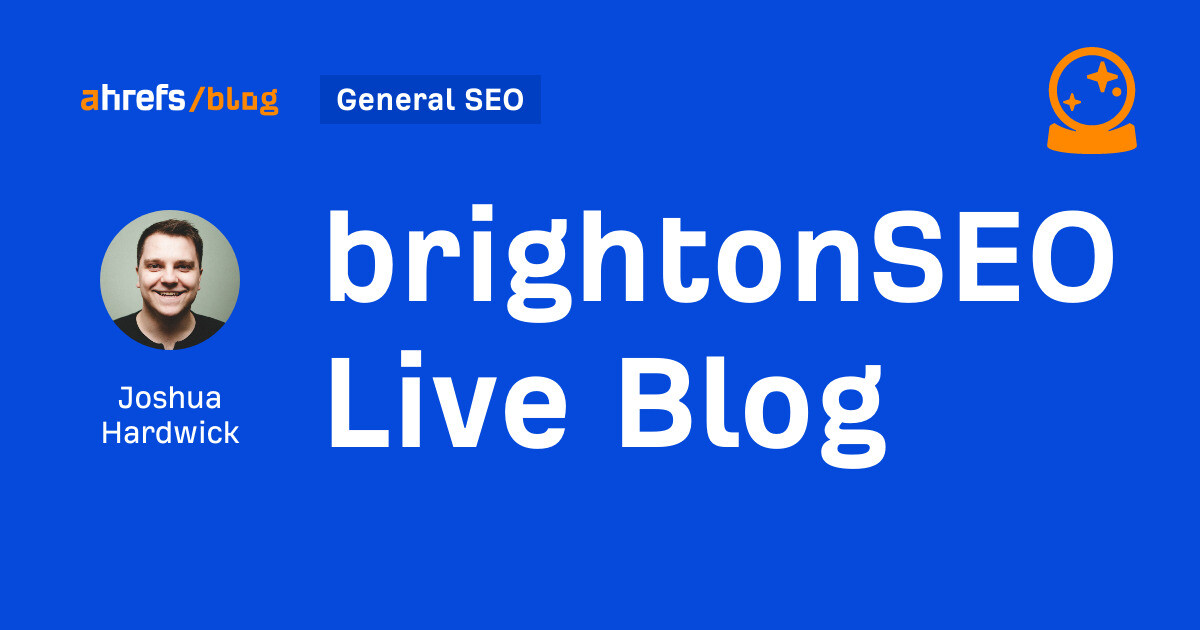
Hello everyone. It’s April again, so I’m back in Brighton for another two days of Being the introvert I am, my idea of fun isn’t hanging around our booth all day explaining we’ve run out of t-shirts (seriously, you need to be fast if you want swag!). So I decided to do something useful and live-blog the event instead.
Follow below for talk takeaways and (very) mildly humorous commentary. sun, sea, and SEO!
-

 MARKETING7 days ago
MARKETING7 days agoBattling for Attention in the 2024 Election Year Media Frenzy
-
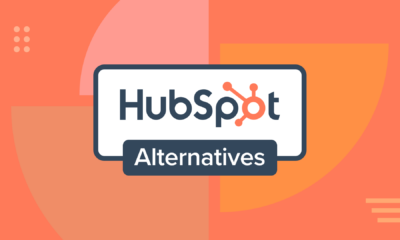
 WORDPRESS6 days ago
WORDPRESS6 days ago13 Best HubSpot Alternatives for 2024 (Free + Paid)
-

 MARKETING6 days ago
MARKETING6 days agoAdvertising in local markets: A playbook for success
-
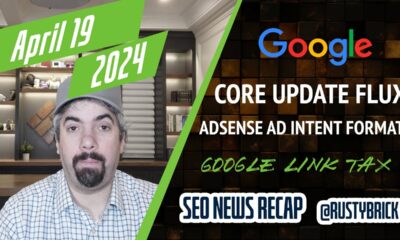
 SEARCHENGINES6 days ago
SEARCHENGINES6 days agoGoogle Core Update Flux, AdSense Ad Intent, California Link Tax & More
-

 AFFILIATE MARKETING7 days ago
AFFILIATE MARKETING7 days agoGrab Microsoft Project Professional 2021 for $20 During This Flash Sale
-

 SEARCHENGINES5 days ago
SEARCHENGINES5 days agoGoogle Needs Very Few Links To Rank Pages; Links Are Less Important
-

 MARKETING5 days ago
MARKETING5 days agoHow to Use AI For a More Effective Social Media Strategy, According to Ross Simmonds
-

 PPC4 days ago
PPC4 days ago10 Most Effective Franchise Marketing Strategies




![The Current State of Google’s Search Generative Experience [What It Means for SEO in 2024] person typing on laptop with](https://articles.entireweb.com/wp-content/uploads/2024/04/The-Current-State-of-Googles-Search-Generative-Experience-What-It.webp-400x240.webp)
![The Current State of Google’s Search Generative Experience [What It Means for SEO in 2024] person typing on laptop with](https://articles.entireweb.com/wp-content/uploads/2024/04/The-Current-State-of-Googles-Search-Generative-Experience-What-It.webp-80x80.webp)






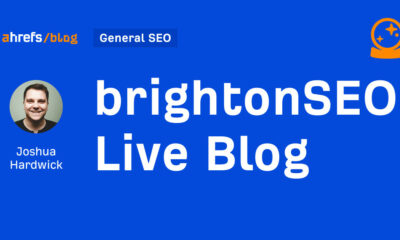



You must be logged in to post a comment Login